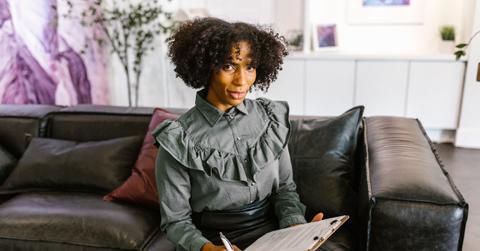How To Find Success Using Social Strategy

Social media has increasingly become a more important channel for retail sales, so it’s even more an imperative to make social commerce a part of your sales strategy. And according to a recent report from Accenture, Why Shopping’s Set for a Social Revolution, global social commerce sales will grow from $492 billion last year to $1.2 trillion by 2025.
That growth, reports Marketing Dive, is driven by millennials and Gen Z consumers, who will be responsible for 62% of those sales. Specifically, by 2025 it’s expected that 33% of the spending will be done by millennials, with Gen Z consumers spending even more. Most in-demand products include clothing (18%), consumer electronics (13%), and home decor (7%).
And according to Marketing Dive,“Meta’s Facebook and Instagram, Snapchat, and TikTok have taken the lead on social commerce, rolling out shopping features and partnerships that seek to increase adoption by brands and consumers.”
I talked to Britney Renbarger, founder of PinkTag, a clothing boutique based in Louisville, Kentucky, to get the scoop on how vital social platforms are to retailers.
After giving birth in 2016, Britney decided she wanted to stay home with her baby. But she quickly realized she had to do something more. Her husband (his background is in marketing) told her he could build her a website, and she says she always loved fashion, so they landed on the idea of a boutique, and PinkTag was launched in January 2017 out of her bedroom.
When you started, where did you source your products?
Britney Renbarger: I did lots of online research, starting with wholesale websites. I tried to find U.S.-made products as best I could. And I also liked the idea of supporting other women-owned businesses. Anytime we find a small and women-owned wholesaler, we try to order from them.

You launched in 2017 in a hugely competitive marketplace. How did you figure out where to market your business?
Britney: I didn’t have a brick-and-mortar. So I knew I had to get in front of people’s eyeballs using online marketing advertising I could lean on. Everyone has social media accounts, and the eyeballs were on Facebook and Instagram, so we ran ads there.
I’ve never cut off advertising there because I feel that if you don’t have a brick-and-mortar, how would people know about it? But it was really hard for us to get our name out there on social media, so we decided to have our first live sale on Facebook.
Is that like QVC or the HSN?
Britney: It’s like that, but a little more homey. We’re not camera pros; we are not public speakers. It was the opposite of what I thought I would do. I don’t like to be the center of attention. And it was my ultimate nightmare to speak in front of a lot of people.
But I had to get over that, being an online-only boutique owner. I wanted a way to connect with my customers. I wanted them to know us better because they only knew us through our website, a couple of photos, and email. We didn’t even have a phone number at that time.
So Facebook Live was a way to connect with our customers and be—this is us. (Britney had hired her sister Kayla to work with her.) We are two sisters, and we’re this small. Many people thought we were a big store. We wanted people to get to know us.
How long do these events last?
Britney: Usually, they’re from 30 minutes to an hour. When we started, we thought we needed to do an hour every time, but now that we’re on four-five times a week, they tend to be 30 minutes.
How does it work? Do you say, here’s a new dress, and you show it?
Britney: Sometimes, my sister and I will try on the product. During COVID, when people couldn’t go into dressing rooms or stores, it was their way to see the products. It’s like a show and tell.
When you decided to do your first Facebook Live, did you have any expectations?
Britney: No—other than being terrified that no one would watch, or I’d run out of things to say. But I learned that customers are interactive and like asking questions or just saying “Hi.” They like having a conversation with you. So I didn’t have expectations. But I was really nervous. I would start sweating and have like a glass of wine or two.
You first presented on Facebook Live in March of 2021. Since you were so scared, did you think you would do this regularly or try this and see what happens?
Britney: I didn’t know if I could get over my fears. After the first time, I thought, I don’t know if I’ll ever do that again. But I had to. I knew I needed more practice.
Now, we see many of the same customers—they’re our regulars. It’s like they’re my friends now, and I’m more comfortable. It’s like I’m having a conversation with people I know.

How are sales? Are you seeing ROI?
Britney: After a few months of Facebook Live selling, we had over 100 million views, which has been a long-term benefit for our business, helping us build brand awareness. A live event can bring anywhere from 30 to 600 participants on a typical day.
It’s also changed the way we buy products. When we’re live, we get real-time feedback. I know what my customers are interested in. And we can answer their questions in real-time.
Doing Facebook Live also brings people to our website who don’t watch the Live events. It’s important to share the videos so people can go back and see the products at any time.
I read in Marketing Dive, “Trust in social commerce remains a high barrier to entry, with half of surveyed social media users concerned that such purchases will not be protected or refunded properly—a similar challenge when e-commerce first emerged.” So the Live events help establish you as real?
Britney: Yes, sometimes customers think we’re not in the U.S., or they believe we are much bigger than we really are. If consumers just see a website, how can they really tell? We show them through our photos and tell our story through our social media pages. And the Facebook Live events bring it all together.
Customers see we wear all the hats in the business. They see ‘those are the sisters on the website.’ And talking to them every day creates trust.
Do you inventory and ship your products?
Britney: Everything we sell is in stock in our warehouse. We ship orders within 24 hours.
We make custom sticker sheets, which we include in the orders. Our products are wrapped in pretty tissue paper in cute bright pink, purple, or orange bags. Those are our colors. We also have a scent we spray on the tissue paper, so the package smells amazing when it arrives. And it all helps build brand awareness.
And you’re growing?
Britney: Once we outgrew my bedroom closet, we moved to the basement of my home in 2020. And then, in 2021, we moved to a 4,000-square-foot warehouse. And we even have a phone number now! We have seven employees.
What’s next?
Britney: We’ll definitely keep doing what we’re doing. Some day in the future, we may consider opening a brick-and-mortar. But right now, we’ll stick to online selling. But the sky’s the limit.
Obviously, Britney is not the only social commerce success. In the past year, 64% of social media users (about 2 billion people) say they’ve bought something on social media. This rise in revenues will give social commerce a 17% share of the overall e-commerce market. If you need assistance creating a social selling strategy for your small business, your SCORE mentor can help. You can find one here.
This article was written by Rieva Lesonsky and appeared on Score.





